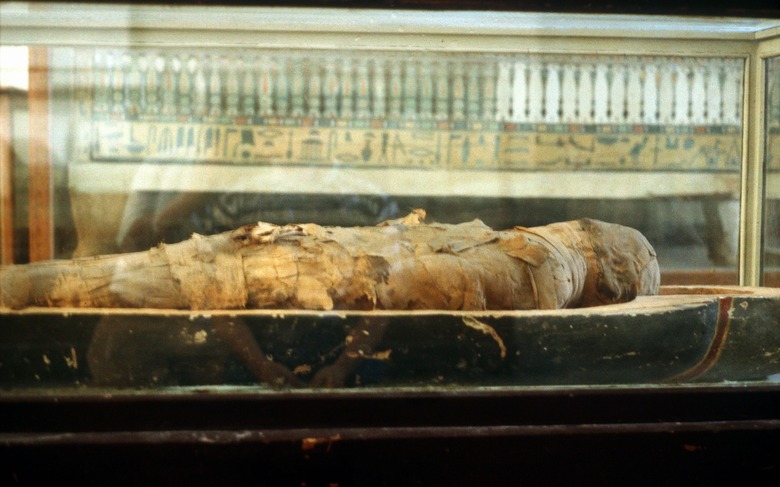Natron In Ancient Egypt
In ancient Egypt, highly skilled embalmer-priests mummified corpses, seeking to preserve the human body in a lifelike form for as long as possible in order to help the departed on his journey through the afterlife. Mummification not only serves as an enlightening look into the spiritual landscape of ancient Egypt, it offers a glimpse into the culture's understanding of science. Natron, a type of colorless salt, played a role in the preservation process, though some aspects of its usage remain unclear.
Know Your Natron
Know Your Natron
Found naturally in Egypt — especially in the salt lakes of the Natron Valley, to which the substance owes its name — natron is a hydrated sodium carbonate mineral. It contains the elements hydrogen, oxygen, sodium and carbon. Because it naturally draws moisture into its molecules, it often served as an ancient Egyptian drying agent. Ancient Egyptians also used natron as a cleansing product for personal hygiene, and the substance lent itself to ceramic pastes, paints, glass-making and meat preservation.
Making Mummies
Making Mummies
After removing quickly decaying organs, ancient Egyptian embalmers completely dehydrated the dead body. According to the Smithsonian Institute, they first coated the body with natron as an intensive drying agent. Additionally, the embalmers placed packets of natron inside the body to absorb moisture. Once the corpse had dried, embalmers washed the body, removed the packets and began the wrapping process.
A Case for Natron
A Case for Natron
The William R. and Clarice V. Spurlock Museum of the University of Illinois at Urbana-Champaign reports that traces of natron have been found in jars and cases recovered from ancient Egyptian tombs. The substance also appears on ancient Egyptian embalming tables and even on some mummified bodies. The ancient Greek historian Herodotus mentions the salt in his descriptions of Egyptian mummification, confirming its use on the flesh as a drying agent.
Salty Skepticism
Salty Skepticism
Although Herodotus' descriptions make a case for the use of natron in ancient Egypt, they also cause a bit of confusion. Some translations of Herodotus' work claim that the corpse was laid, or "steeped," in a salt bath "with natron." It remains unclear weather or not natron was a part of this solution — "with natron" could simply refer to the fact that the body had previously been coated in the mineral. In an article for the "Journal of Plastination," Bob Brieri and Ronald S. Wade argue that the ancient Egyptians were aware of natron's drying qualities, so a moisturizing salt bath would be counterintuitive to the dehydration process. They also point out that there have been no large vats, which would have been necessary for salt baths, recovered from this era in history.
Cite This Article
MLA
Ketchum, Dan. "Natron In Ancient Egypt" sciencing.com, https://www.sciencing.com/natron-ancient-egypt-7918/. 24 April 2017.
APA
Ketchum, Dan. (2017, April 24). Natron In Ancient Egypt. sciencing.com. Retrieved from https://www.sciencing.com/natron-ancient-egypt-7918/
Chicago
Ketchum, Dan. Natron In Ancient Egypt last modified March 24, 2022. https://www.sciencing.com/natron-ancient-egypt-7918/
